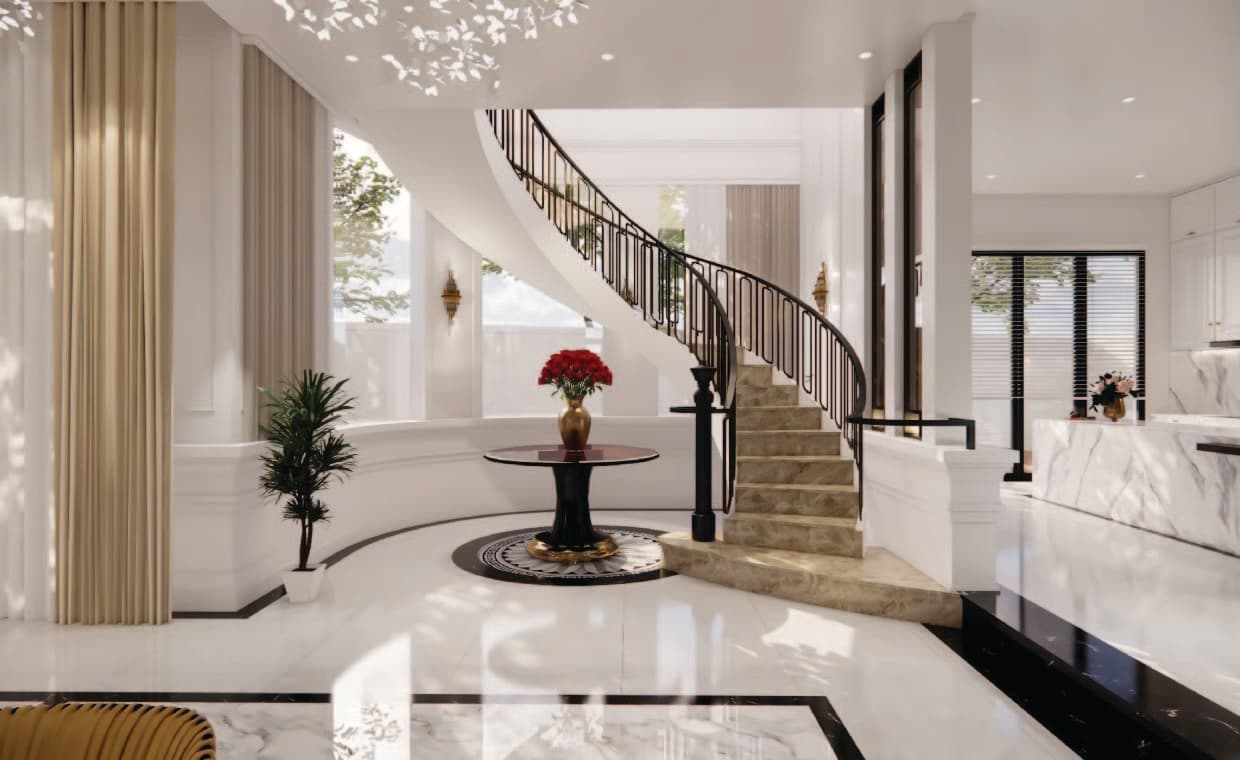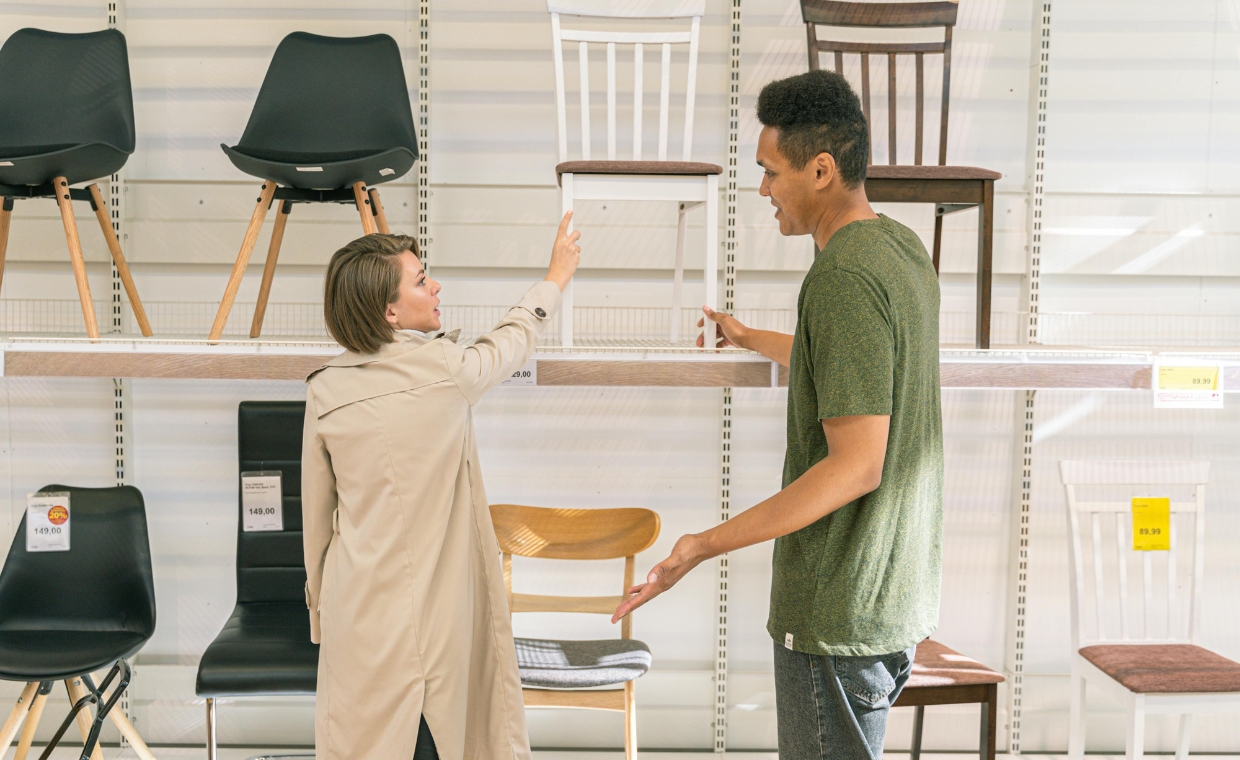
Staircases provide a functional and stylish look to your home. They are an essential transportation feature for moving from one level to another. For any building, it is crucial to consider the type of staircase to use when starting a renovation or remodelling project. There are many options available, ranging from modern stairwaysand vintage stairs to intricate spiral staircases. The staircase’s function, cost, and visual appeal are the factors to consider when you choose astaircase.
Hence, we have brought up this blog, which addresses the key considerations for staircase design, followed by the different types of staircases anddos and don’ts when designing staircases for your homes.
5 Key Considerations for Staircase Design
Here are five factors to remember while designing a staircase:
01. Understand The Purpose

You must think about the purpose of the house staircase design. You should know exactly what you want to do with it, whether you want to send a message, add some colour, engage others, reflect on your personal space, or make an impression. After you’ve settled on the purpose, you’ll need to figure out what staircase designs will go best with it.
02. Lighting

One of the most important staircase design considerations is the lighting. The right lighting can change the whole game of a staircase; hence, study the lighting system before you install it. Dull lighting has the potential to entirely obscure your staircase details. It’s critical to have lots of lighting on your staircase. Another suggestion is to design pathway lighting under the riser, which not only highlights it but also makes it appear beautiful.
03. Safety

When thinking of staircase designs for homes, safety is undoubtedly a factor to consider. Always think of additional safety elements while keeping your staircase’s design beautiful. For a household with young children, a closed staircase is a better option than a spiral staircase. All staircase designs should adhere to building codes.
04. Staircase’s Dimensions

Smaller staircase decorating ideas are appropriate if your staircase is not too wide, but if you have a wide staircase and a large wall to support it, you can go bold with maximalist design ideas. The theme you choose for your staircase should be proportionate to the staircase’s width and size.
05. Right Composition

If you only want to hang one plant or vein, there’s no math to do, simply place them along the vertical wall. But if you wish to display more wooden decor, plants, photo frames, or mirrors, consider a proper format or composition. If you want to know more about staircase wall decoration, do go through our blog:
Tips for Staircase Wall Decor: Hanging Arts!
Different Types of Staircases
Listed below are the different types of staircases that you will find in most homes:
01. Straight Staircase

The most popular and least expensive style of staircase is a straight staircase. As the name suggests, these have no bends. It qualifies for a linear flight with no change in direction.
It is simple to move around on them. The design does not require any additional support; you will only need an attachment at the bottom and top. The major advantage of this design is the easy installation of the railings and handrails. According to William Perkins Spence (2000) (author of the book “Constructing Staircases, Balustrades and Landings,”) a straight stair may be a single unbroken flight or have a landing about halfway up its length. The landing extends in the same direction as the stair and must be the same width.
02. L-Shaped Staircase

A straight staircase with a bend is known as an L-shaped staircase. Because the landing is either closer to the top or bottom, it’s also known as a quarter-turn stair.
It could be in the middle of a close-end or at the end of another. The bend is normally 90 degrees. Because of its broader landing, an L-shaped staircase takes up less room. The central landing limits the number of treads on which one can fall, making it safer.
03. Circular Stairs

All the steps in circular stairs radiate from the central point of a semicircle. For a better architectural aspect, a circular stair is built at a building’s entryway. However, they are difficult to build
04. Spiral Staircase

These stairs comprise identically sized stairs installed to create a continual change in direction throughout the elevation. They radiate from a central newel post and take up the least amount of room. The overall diameter of such stairs can be anywhere between 1 and 2.5 metres.
05. Cantilever Staircase

The cantilever staircase is a modern staircase design. The stair treads on the cantilever staircase look to be floating in mid-air with no support. The wall secures one end of the treads, while the other end either secures on a railing or floats freely. They add interest and space to a room because of their nature.
06. Open Newel Stairs

There is a well or opening between the forward and backward steps of this kind of staircase, which is made up of two or more flights.
If organizing all the steps into two flights proves to be too challenging, there might be a third, shorter flight with three to six steps available, running perpendicular to the hall. The lift mostly uses open newel stairs.
07. Dog Legged Staircase

Dog-legged staircase is made up of two parallel flights and a landing. Small spaces are ideally suited for dog-legged staircases. When a flight is over, a mid-landing is provided. At the mid-landing, the direction of the stairway is altered. The direction of the second flight is precisely the opposite of the first one.
08. Bifurcated Staircase

Bifurcated stairs are also known as split stairs. It is due to the fact that after a straight flight of stairs and landing, it splits into two smaller flights. Both of these flights ascend in opposite directions and ultimately reaching the same horizontal level.
The railing of the stairs begins at the foot of the wide stairs and continues all the way to the top of the narrower flights, with the two further narrow flights beginning at the mid landing. These staircases can give a very big impression in the interior of public modern buildings when placed at the entrance hall.
Also read
Precautions for Installing Safety Railing for Balconies
Do’s and Don’ts When Designing Staircases for Your Homes
01. Stick to your budget
It Hence, staircase budget planning is important. is crucial to do some research and determine a budget before you start with staircase designs. A staircase can easily get pricey and go way over budget, depending on the amount of work.
02. Don’t Sacrifice Quality
Just because the budget is a priority, that doesn’t mean you can sacrifice quality. As they are a practical and useful feature of your house, it’s critical to keep them looking their best while still performing their role. Although it may be tempting to save money by using less expensive materials, the staircase is something where you should never sacrifice quality.
03. Do a lot of research
There are several options for designing the look of your staircase, each with its own set of advantages and disadvantages. Hence, it’s critical to conduct extensive research and ensure that you’re getting the greatest available solution to fit your house.
04. Don’t Neglect the Size and Proportion
The wrong size of any design feature can make it extremely unpleasant, making the overall staircase feature a disaster.
Like any other place, such as a living room, bedroom, or pooja room. The importance of staircase design cannot be overstated. They are vital because they connect one floor to the next, as well as the theme of the entire house. Staircase designs for homes are an excellent area to try out new ideas.
Conclusion
Summing up, a staircase is one of the essential elements of a building, so you must always consider the factors to remember while designing a staircase. The options and materials are endless when you think of different types of staircase designs. But you must always consider the one that suits your home the best. One crucial element when choosing a staircase style is the space needed. If you keep the given key considerations for staircase design, then you will never go wrong.
FAQs
01. How can I make my staircase design multifunctional?
It’s a good idea to think about multifunctional house staircase design, integrating extra storage into your design depending on the space. Installing cupboards beneath the stairs to make use of space that would otherwise remain unused is a good idea. Adding doors conceals everything, and the extra storage is ideal for storing shoes, coats, and even children’s toys.
02. How to start with staircase design ideas?
Look for ideas and bring any images or notes you have with you to your architects. Pinterest is full of beautiful photos of stairs and is an excellent resource for finding unique designs. It will assist you in determining the finest alternative for your residence.
03. What is a landing in a staircase?
A landing is a horizontal element that permits two or more stair planes to connect. It serves as a resting area and provides access to the stairway’s many zones. Floor landings provide access to various regions of the floor.
04. How do I renovate my staircase?
First, consider the priorities of the staircase and decide which part of it needs a change. Is it the railings, threads, or risers? Once you get there, start fixing them according to the theme.
05. What is the minimum amount of space required to install a spiral staircase?
The smallest spiral stair diameter is 3’6″, which is around 42″ x 42″. The footprint will rise in 6″ intervals from here, just like the diameters.
Also Read: 9 Basic Requirements of a Good Stair For Your Home
Image Courtesy : Image 12, Image 13
Author Bio
Saili Sawantt – She is an Architect and Interior Designer by profession. Writing is what she treats as her passion. She has worked as an Architectural Writer, Editor, and Journalist for various design as well as digital portals, both national and international. Formerly she has also worked with Godrej Properties Limited (GPL) Design Studio, Mumbai, due to her keen interested in learning about Sustainability and Green buildings. Apart from this, she runs her blog ‘The Reader’s Express’ and is a practicing Architect & Interior Designer.






























